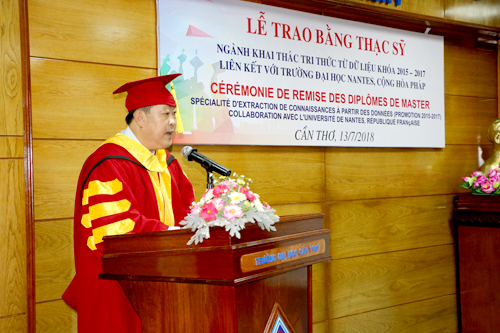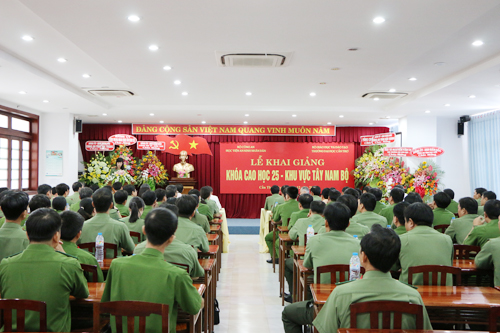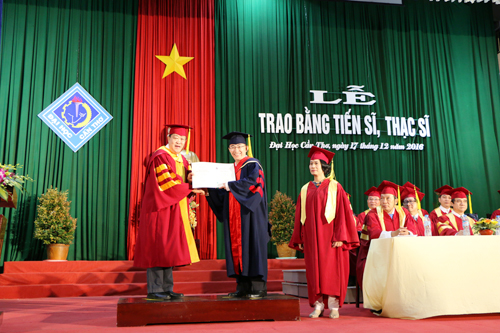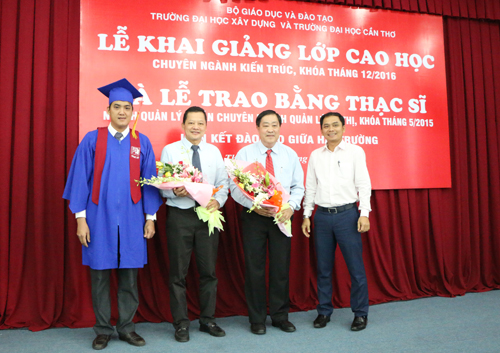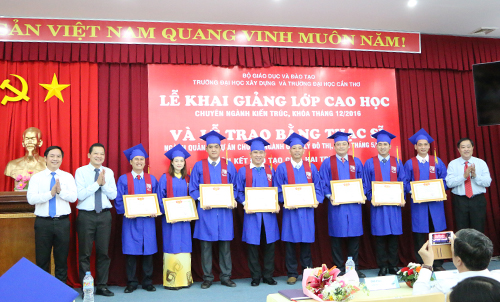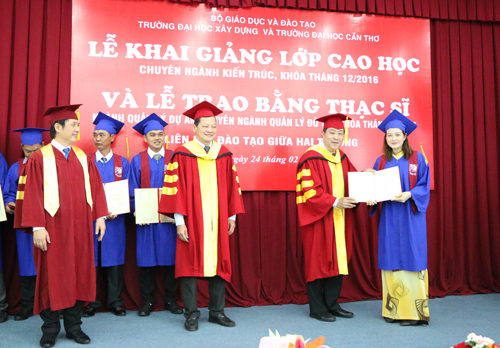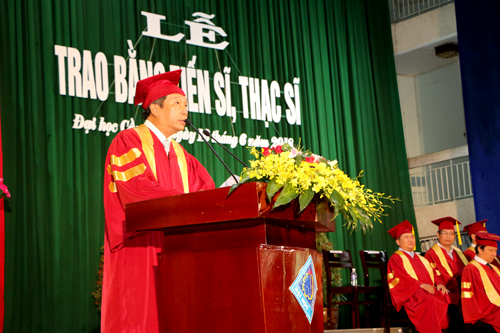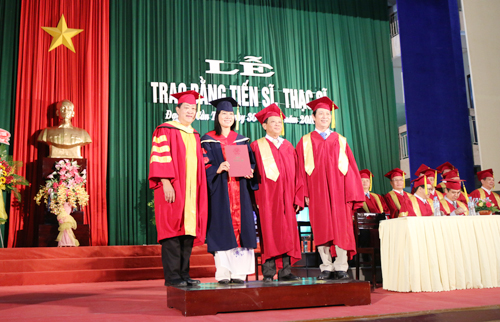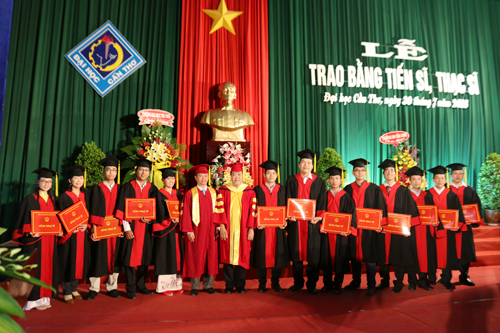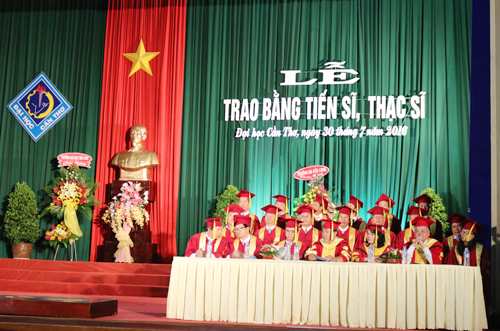
- Tên đề tài: “Giá trị kinh tế của chương trình làm giảm lượng chất thải rắn của hộ gia đình ở Đồng bằng sông Cửu Long”.
- Tác giả: Huỳnh Thị Đan Xuân, Khóa: 2018
- Chuyên ngành: Kinh tế nông nghiệp; Mã số: 9620115. Nhóm ngành: Nông, lâm nghiệp và thuỷ sản.
- Người hướng dẫn chính: PGS.TS. Huỳnh Việt Khải - Trường Đại học Cần Thơ
- Tóm tắt nội dung luận án
Mục tiêu của luận án “Giá trị kinh tế của chương trình làm giảm lượng chất thải rắn của hộ gia đình ở Đồng bằng sông Cửu Long” nhằm phân tích các yếu tố ảnh hưởng quyết định chấp nhận tham gia chương trình làm giảm lượng chất thải rắn (CTR) của hộ gia đình ở Đồng bằng sông Cửu Long (ĐBSCL), ước tính mức sẵn lòng chấp nhận (WTA) tham gia chương trình của hộ gia đình, từ đó, đề xuất các hàm ý chính sách nhằm làm giảm lượng CTR và nâng cao chất lượng của hoạt động quản lý CTR ở ĐBSCL. Để đạt được mục tiêu này, luận án sử dụng phương pháp định giá ngẫu nhiên và phương pháp thí nghiệm lựa chọn để ước tính WTA của hộ gia đình. Luận án cũng sử dụng mô hình Logit, mô hình Logit đa thức, mô hình Logit hỗn hợpc để xác định các yếu tố ảnh hưởng đến quyết định chấp nhận chương trình của hộ gia đình và ước tính WTA. Với những kết quả đạt được, luận án đã đề xuất một số hàm ý chính sách để nhằm làm giảm lượng CTR và nâng cao chất lượng của hoạt động quản lý CTR ở ĐBSCL.
Từ khóa: chương trình quản lý chất thải rắn, giá trị kinh tế, mức sẵn lòng chấp nhận, phương pháp định giá ngẫu nhiên, phương pháp thí nghiệm lựa chọn
- Những kết quả mới của luận án
Thứ nhất, nghiên cứu thống kê được lựợng CTRSH trung bình của hộ gia đình khoảng 1,8 kg/ngày, chỉ số phát sinh khoảng 0,5 kg/ngày/người (nội dung 4.2.1). Các hộ gia đình đã tự thực hiện việc phân loại CTR (64,71%) và ủng hộ chương trình phân loại tại nguồn (73,36%). Bên cạnh đó, hộ gia đình cũng đã thực hiện việc tái chế (76,26%) (nội dung 4.2.2.1) với lượng tái chế 42,06 gram/ngày và lượng tái chế 2,91%. Kết quả khảo sát còn cho thấy có 71,97% đáp viên chấp nhận tham gia chương trình. Đồng thời, kết quả ước lượng bằng mô hình Logit cho thấy các yếu tố như mức sẵn lòng chấp nhận bù đắp cho trước, trình độ học vấn của đáp viên, loại đô thị của nơi sinh sống của đáp viên và thực hiện hoạt động tái chế của đáp viên là các yếu tố có ảnh hưởng đến quyết định tham gia chương trình phân loại tại nguồn theo hướng tái chế. Mức sẵn lòng chấp nhận trung bình của hộ gia đình để tham gia chương trình làm giảm lượng CTR khoảng 30.000 đồng/tháng/hộ và mức phí tương ứng mà hộ gia đình có thể đóng là 120.000 đồng/tháng.
Thứ hai, kết quả kiểm định IIA của Hausmann và McFadden cho thấy việc sử dụng mô hình Logit tham số ngẫu nhiên là phù hợp hơn so với mô hình Logit đa thức. Kết quả kiểm định Swait-Louviere cho thấy việc sử dụng mô hình Logit tham số ngẫu nhiên với biến tương tác để ước lượng là phù hợp hơn so với mô hình Logit tham số ngẫu nhiên cơ bản. Kết quả ước lượng bằng mô hình Logit tham số ngẫu nhiên với biến tương tác cho thấy các thuộc tính của chương trình phân loại tại nguồn theo hướng tái chế, mức sẵn lòng chấp nhận bù đắp cho trước, làm giảm lượng chất thải rắn cần được xử lý, làm giảm lượng khí thải CO2, số loại chất thải rắn được phân loại có ảnh hưởng đến quyết định lựa chọn chương trình của hộ gia đình. Ngoài ra, từ kết quả ước lượng bằng mô hình Logit tham số ngẫu nhiên với biến tương tác còn cho thấy yếu tố thu nhập, giới tính và tuổi của đáp viên cũng có ảnh hưởng đến quyết định tham gia chương trình của các hộ gia đình ở ĐBSCL.
Thứ ba, từ các tham số được ước lượng, mức sẵn lòng chấp nhận trung bình để tham gia chương trình làm giảm lượng CTR khoảng 79.000 đồng/tháng/hộ và mức phí tương ứng mà hộ gia đình có thể đóng hàng tháng là gần 72.000 đồng.
- Các ứng dụng/khả năng ứng dụng trong thực tiễn, các vấn đề cần tiếp tục nghiên cứu
Về mặt khoa học: Thứ nhất, luận án đã hệ thống cơ sở lý thuyết và thực nghiệm về giá trị kinh tế và định giá giá trị kinh tế của hàng hóa phi thị trường, từ đó trình bày đầy đủ, chi tiết và khoa học về các lý thuyết định giá kinh tế cũng như các phương pháp định giá hàng hóa phi thị trường. Thứ hai, luận án đã sử dụng mức sẵn lòng chấp nhận là thước đo để ước tính giá trị kinh tế của chương trình làm giảm lượng CTR của hộ gia đình. Thứ ba, nghiên cứu đã sử dụng đồng thời hai phương pháp định giá phi thị trường, phương pháp định giá ngẫu nhiên và phương pháp thí nghiệm lựa chọn, để ước lượng giá trị kinh tế của chương trình. Thứ tư, luận án đã sử dụng mô hình Logit, Logit đa thức và Logit hỗn hợp để xem xét sự ảnh hưởng của các yếu tố ảnh hưởng quyết định chấp nhận chương trình làm giảm lượng CTR của hộ gia đình.
Về mặt thực tiễn: Kết quả nghiên cứu của luận án là tài liệu tham khảo cho các cơ quan nhà nước quản lý chất thải rắn từ Trung Ương đến các địa phương trong việc nâng cao chất lượng của hoạt động quản lý chất thải rắn đặc biệt trong tình hình lượng CTR gia tăng hiện nay.
Các vấn đề cần tiếp tục nghiên cứu: bên cạnh những kết quả đạt được, nghiên cứu này vẫn còn tồn tại một số hạn chế. Vì vậy, nghiên cứu đề xuất cho hướng nghiên cứu tiếp theo: (i) Nghiên cứu có thể tiến hành thực hiện ở các địa bàn thuộc khu vực nông thôn và các loại đô thị còn lại, (ii) nên chọn lọc và bổ sung các thuộc tính khác để mô tả tổng quát hơn cho chương trình quản lý CTR và (iii) có thể bổ sung đặc điểm dân tộc vào mô hình ước lượng.
Thesis title: “Economic value of the solid waste reduction management program of household in the Mekong Delta”
- Major: Agricultural Economics Code: 62620115
- Full name of PhD student: Huynh Thi Dan Xuan Training period: 2018 - 2021
- Supervisor: Assoc. Prof. Dr Huynh Viet Khai - Can Tho University
- Training institution: Can Tho University
- Dissertation summary
The objective of the thesis "Economic value of the solid waste reduction management program of households in the Mekong Delta" is to identify the determinants influencing the decision to accept participation in the program to reduce the amount of solid waste in the Mekong Delta, estimate the household's willingness to accept (WTA) to participate in the program, thereby proposing policy implications for reducing the amount of solid waste and improving the quality of solid waste management activities in the Mekong Delta. In order to achieve this goal, the thesis employed the contingent valuation methodology and the choice experiment to estimate the WTA level of the household. The thesis also employed the Logit model, multinomial Logit model, and mixed Logit model to determine the factors affecting the household's decision to accept the program and estimate the WTA. Based on the findings, the thesis has proposed some policy implications to reduce the amount of solid waste and improve the quality of solid waste management activities in the Mekong Delta.
Keywords: solid waste management program, economic value, willingness to accept, contingent valuation methodology, choice experiment method
- New results of the thesis
Firstly, the research reveals that the average amount of MSW from the household is about 1.8 kg/day, and the generated index is about 0.5 kg/day/person (section 4.2.1). Households carried out the classification of solid waste by themselves (64.71%) and supported the program of classification at source (73.36%). Besides, the household also did the recycling (76.26%) (Section 4.2.2.1) with 42.06 grams/day and 2.91% recycling. The survey results also revealed that 71.97% of the respondents accepted to join the program. At the same time, the results estimated by the Logit model identify some determinants such as the willingness to accept an offered compensation, the respondent's education level, the urban type of the respondent's place of residence, and the implementation of respondents' recycling activities are the determinants of the decision to participate in the recycling program at the source. The average willingness to accept households in order to participate in the reduction program is about 30,000 VND/month/household and the acceptable fee that households can pay is 120,000 VND/month.
Second, the results of Hausmann and McFadden's IIA test indicated that the random parameter Logit model is more appropriate than the Multinomial Logit model. The results of the Swait-Louviere test reveal that the employment of the random parameter Logit model with the interaction variable for estimation is more suitable than the basic random parameter Logit model. The results estimated by the Logit model of random parameters with the interaction variable show the properties of the sorting program at the source towards recycling, the willingness to accept a given offset and the reduction in the amount of solid waste required treated, reducing CO2 emissions, and the number of types of solid waste classified affects the decision of households to choose a program. In addition, the estimation results by the Logit model of random parameters with interactive variables also show that the income, gender and age of the respondents also affect the decision to participate in the program of households in the Mekong Delta.
Third, from the estimated parameters, the average willingness to accept to participate in the program reduces the amount of solid waste by about 79,000 VND/month/household and the corresponding fee that the household can pay monthly is close to 79,000 VND/month/household. 72,000 VND.
- Practical applications/applicability, issues that need further research
In terms of the science aspect: Firstly, the thesis has systematized the theoretical and empirical basis of economic value and economic valuation of non-market goods, thereby presenting a complete, detailed and scientific Learn about economic pricing theories as well as non-market goods pricing methods. Second, the thesis employed willingness-to-accept as a measure to estimate the economic value of the program to reduce household solid waste. Third, the thesis used two non-market valuation methods simultaneously, including contingent valuation methodology and the choice modeling approach, to estimate the economic value of the program. Fourth, the thesis employed several models including Logit, Multinomial Logit, and Mixed Logit models to examine the determinants affecting the decision to accept the program to reduce household CTR.
In terms of practice: The findings of the thesis are expecting a reference for policymakers in solid waste management from the central to local levels in improving the quality of solid waste management activities, especially in the current situation of increasing solid waste management currently.
Issues for further research: Besides the obtained results, this thesis still has some limitations. Therefore, the thesis proposes future research including: (i) The topic can be carried out in rural areas and the rest of the urban areas, and (ii) it should be selected and supplemented. add other attributes to describe the solid waste management program and (iii) ethnicity can be added to the estimation model.
- Xem chi tiết nội dung luận án
- Xem thông tin đăng tải tại Website Bộ giáo dục và Đào tạo. (Nhập tên NCS vào ô tìm kiếm)





